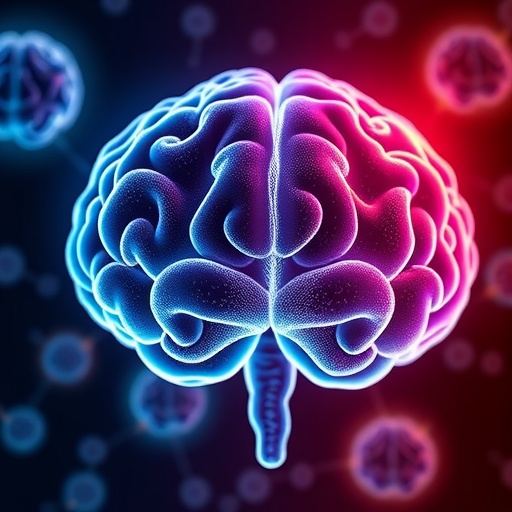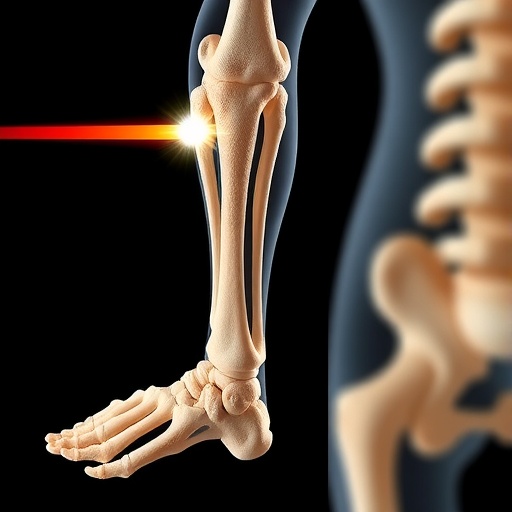A groundbreaking collaborative effort between three distinct schools at the University of Southern California has set the stage for a novel approach in the fight against Alzheimer’s disease. Propelled by an $8 million grant from the National Institutes of Health, this interdisciplinary team of scientists is pioneering the development of a drug targeting a previously unaddressed biological mechanism implicated in Alzheimer’s pathology. Their work embodies the cutting-edge integration of molecular biology, artificial intelligence, and pharmacology to unlock new therapeutic possibilities for a disease that affects millions worldwide.
At the heart of this research lies the perplexing question: why do certain carriers of the APOE4 gene, the most significant genetic risk factor for late-onset Alzheimer’s, manifest dementia symptoms while others carrying the same genetic variant remain cognitively intact? Led by Hussein Yassine from the Keck School of Medicine at USC, the team zeroes in on this enigma by investigating enzymatic activity that may predispose some brains to heightened inflammation, a critical driver of neurodegenerative decline.
Yassine’s laboratory has identified a particular enzyme — calcium-dependent phospholipase A2 (cPLA2) — which appears to degrade protective omega-3 fatty acids within the brain, thereby triggering inflammatory cascades detrimental to neuronal health. This discovery pivots away from traditional Alzheimer’s targets such as amyloid-beta plaques and tau tangles, addressing instead the inflammatory underpinnings that may amplify disease progression in susceptible individuals. The challenge remains in devising a drug capable of selectively inhibiting cPLA2 without collateral inhibition of related enzymes vital for normal cellular function.
To surmount this, Yassine forged an alliance with computational biologist Vsevolod “Seva” Katritch, whose lab marries the prowess of artificial intelligence with physics-based molecular simulations to sift through billions of small molecules at unprecedented speed. Utilizing his proprietary platform, V-SYNTHES, Katritch’s team performs in silico screenings to identify candidate compounds capable of traversing the blood-brain barrier and binding precisely to the active site of cPLA2, akin to a key fitting into a lock. This innovative approach accelerated the transition from conceptual target to concrete drug candidates within a mere two years.
Complementing these efforts, pharmacologist Stan Louie from the USC Alfred E. Mann School of Pharmacy and Pharmaceutical Sciences oversees the critical phase of translating these molecular discoveries into viable medications. He meticulously examines pharmacokinetics and pharmacodynamics — assessing how the drug is metabolized, distributed, and eliminated, as well as appraising its safety profile. This rigorous evaluation ensures that promising cPLA2 inhibitors can advance into human clinical trials with minimized risk and optimized efficacy.
Meanwhile, imaging expert Kai Chen from the Keck School of Medicine spearheads efforts to monitor the drug’s influence on neuroinflammation using advanced radiological techniques. His work enables the visualization of subtle changes in brain inflammation, providing vital biomarkers that will track therapeutic response and inform dosage adjustments in forthcoming clinical studies. This integration of drug development and imaging paves the way for a comprehensive understanding of treatment impact at the molecular and systemic levels.
Alzheimer’s disease currently burdens approximately six million Americans and commands a staggering economic toll exceeding $300 billion annually. Despite relentless research endeavors, extant FDA-approved therapies offer limited benefits, largely addressing hallmark amyloid or tau pathologies with only modest symptom mitigation. This USC initiative introduces a paradigm shift by focusing on brain inflammation as a central pathological component, potentially yielding a transformative therapeutic avenue.
Yassine’s decade-long inquiry into cPLA2 revealed that individuals with heightened enzyme levels among APOE4 carriers consistently exhibited cognitive decline, hinting at a causal relationship. Yet, the pathway remained underexplored due to the high homology within the phospholipase enzyme family. Prior attempts to inhibit these enzymes suffered from inadequate selectivity, risking off-target effects that interfere with enzymes essential for normal physiology, underscoring why previous drug candidates failed to translate into safe treatments.
Through collaboration with the Katritch Lab, the team has sussed out compounds refined to selectively target cPLA2, sparing its enzymatic cousins. Now advancing into the third generation of these candidates, the project stands on the cusp of unveiling a molecule both potent and precise enough to attract pharmaceutical investment and propel clinical evaluation. This stage marks a critical inflection point in transforming a theoretical concept into a tangible drug candidate.
Experimental models of Alzheimer’s further validate the therapeutic promise of cPLA2 inhibition. Yassine’s team demonstrated that blocking the enzyme doesn’t just attenuate neuroinflammation but also reinstates the beneficial actions of omega-3 fatty acids, providing dual neuroprotective effects. Importantly, they observed restoration of the blood-brain barrier integrity, a critical defense mechanism often compromised in neurodegeneration, which when leaky, facilitates the infiltration of harmful substances exacerbating neuronal injury.
If successful, this project will pioneer the first brain-penetrant, highly selective inhibitor of cPLA2, heralding a new chapter in neurodegenerative disease treatment. Such a drug could circumvent the limitations of current Alzheimer’s therapies by directly modulating inflammation-based neuronal damage, potentially slowing or halting disease progression in genetically vulnerable populations.
Yassine reflects on the collaborative spirit driving this innovation: “It takes a team to turn discovery into hope.” Indeed, the convergence of molecular insights, computational acumen, and pharmacological expertise exemplifies the multidimensional approach necessary to tackle complex diseases like Alzheimer’s. With continued NIH support over the next five years, this research promises to advance from bench to bedside, offering fresh optimism for patients and families grappling with this devastating illness.
As this endeavor unfolds, it exemplifies the profound potential of interdepartmental synergy and technological innovation in addressing unmet medical needs. By charting unexplored biological terrains and harnessing computational power, the USC team is reshaping the Alzheimer’s therapeutic landscape. Their journey not only underscores the urgency for new treatments but also illuminates a hopeful path forward grounded in precision science and collaborative innovation.
Subject of Research: Development of selective inhibitors targeting calcium-dependent phospholipase A2 (cPLA2) enzyme to reduce neuroinflammation in Alzheimer’s disease.
Article Title: New Frontiers in Alzheimer’s Therapy: Targeting Brain Inflammation through Selective cPLA2 Inhibition
Web References:
– National Institutes of Health: https://www.nih.gov/
– Keck School of Medicine of USC Faculty – Hussein Yassine: https://keck.usc.edu/faculty-search/hussein-yassine/
– USC Michelson Center for Convergent Bioscience – Vsevolod Katritch: https://katritch.usc.edu/people.html
– USC Alfred E. Mann School of Pharmacy – Stan Louie: https://mann.usc.edu/faculty/stan-gee-louie-pharmd/
– Keck School of Medicine – Kai Chen: https://keck.usc.edu/faculty-search/kai-chen/
Keywords: Alzheimer’s disease, neuroinflammation, cPLA2 enzyme, APOE4 gene, drug discovery, drug development, artificial intelligence, blood-brain barrier, neurodegenerative diseases, computational biology, pharmacology, selective enzyme inhibitors
Tags: APOE4 gene and dementiaartificial intelligence in drug discoverycalcium-dependent phospholipase A2 in Alzheimer’sinflammation and cognitive declineinnovative therapies for Alzheimer’s diseaseinterdisciplinary approach to Alzheimer’smolecular biology and Alzheimer’sneurodegenerative disease research fundingNIH grant for Alzheimer’s researchomega-3 fatty acids and brain healthUSC Alzheimer’s drug developmentUSC Keck School of Medicine research





